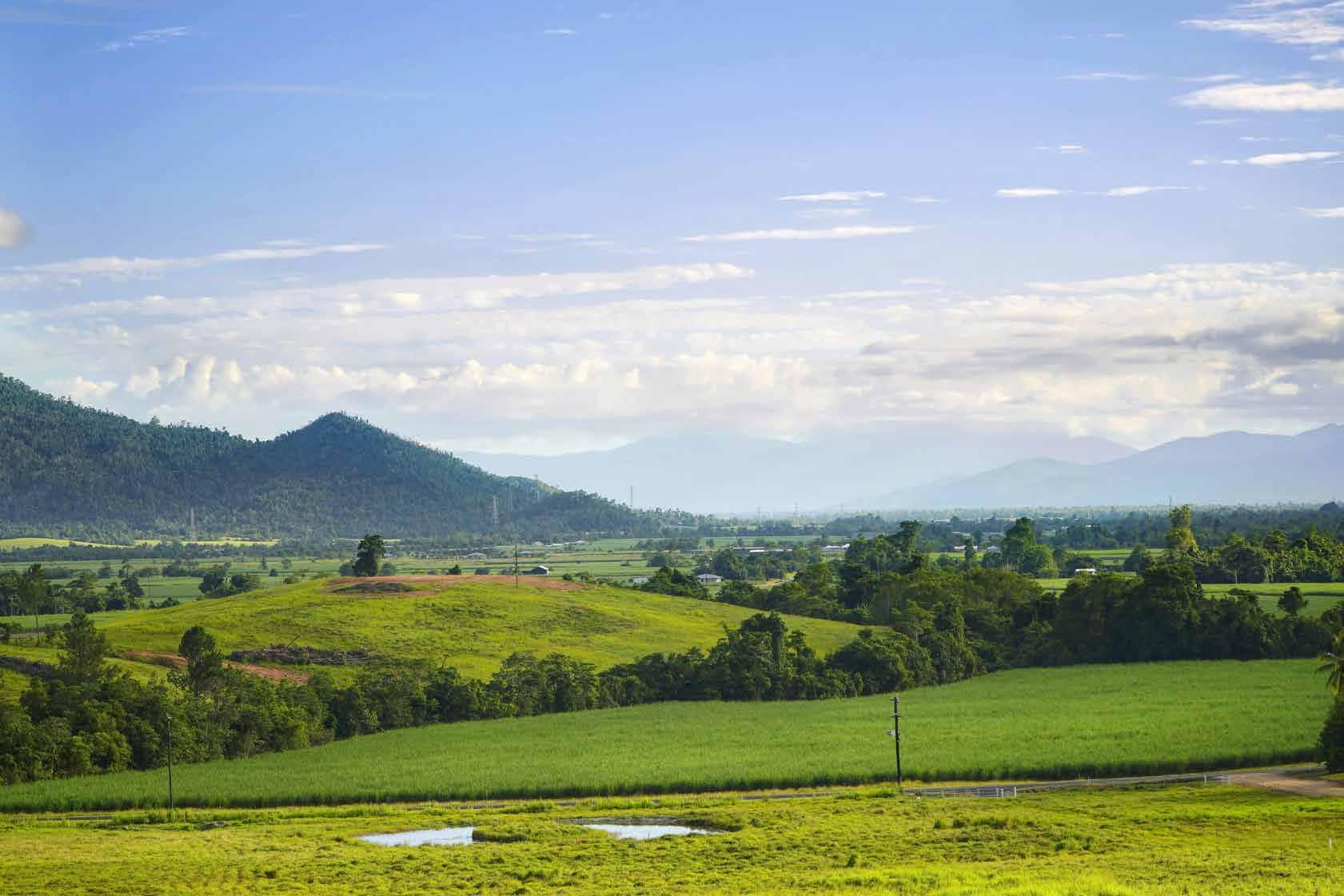
3 minute read
CARING FOR THE MURRAY CATCHMENT BY MOBILISING WHAT MATTERS TO GROWERS
CARING FOR THE MURRAY CATCHMENT BY MOBILISING
WHAT MATTERS TO GROWERS
Advertisement
Queensland’s Wet Tropics is a national park that extends across 894,420 ha (0.12% of Australia) and includes the state’s highest peak, Bellenden Ker, which forms part of the northern extent of the Great Dividing Range.
Combined with Queensland’s highest annual rainfall it’s no wonder that this world heritage area is home to 15 river catchments many of which flow east to the Coral Sea and Great Barrier Reef lagoon; the Murray River Catchment is one.
With the coastal township of Cardwell at its heart, the catchment includes the Murray River and Kennedy and Meunga creeks. Tributaries from the Tully and Herbert catchments also influence the hydrology as does the vast area of highly productive flat alluvial plains where farming land uses include grazing, bananas and sugarcane.
‘Mobilising the Murray – Murray Reef Trust VII (MRT7)’ is a project launched in 2021 by Terrain Natural Resource Management (NRM) and funded by the Australian Government’s Reef Trust. In 2022, Sugar Research Australia has become a major partner in this hands-on initiative and will support growers in the catchment by addressing productivity constraints and accessing opportunities and incentives for the long-term sustainability of the sugar industry.
Cathy Mylrea is an Environmental Sustainability Scientist and as the MRT7 Project Manager will oversee SRA’s involvement. She explains how the project will benefit growers in the catchment.
“In recent years the industry has seen substantial investment from programs that have specifically targeted nutrient management and practices,” Cathy said.
“The MRT7 project takes a broader view and asks the farmer what issues, from their perspective, can be identified and addressed, and then goes further by offering financial incentives and expert advice to help the grower address those constraints.
“Constraints might include blocks on a property that are continually low yielding; in this case it would be beneficial for the grower, and the catchment, to investigate why this is.
"For example, whether this is due to soil type, a drainage issue or influences from pests and diseases. Our aim is to work together to find the root cause.
“There will then be the opportunity to provide financial support or services to address these issues through deeper soil tests, Pachymetra tests, drainage management and other identified means; and at the same time support the update of nutrient management plans and whole-of-farm planning,” Cathy said.
“This is a very exciting project for SRA to be involved in. The integrated approach of the project aims to leave a legacy of enhanced industry capability driven by productivity and efficiency gains that also deliver water quality outcomes: a great result for growers and the environment.

In April as part of the MRT7 project a soil health workshop with David Hardwick (pictured far left) an agricultural ecologist with Soil Land Food, was held on Derrick and Wendy Finlayson’s farm in the Murray Upper district. Participants included growers and extension staff.
Two agronomists have recently joined the SRA team to work exclusively on the project. Both will be based at SRA’s Tully Station and be available to work alongside growers, supporting them in identifying constraining factors on their farm.
A series of practical in-field demonstrations, field days and trial
sites will form a central part of the project engagement where issues and constraints, along with outcomes can be shared.
Subscribe to SRA’s fortnightly
eNewsletter to be kept informed of all workshops and events relevant to you in your area.
Growers in the Murray catchment area who are interested in being involved
in the MRT7 project can contact Nancy Rincon by emailing NRincon@ sugarresearch.com.au
The Mobilising the Murray Reef Trust Vll project is funded by the Australian Government’s Reef Trust.

Looking south from Tully across the Murray catchment











